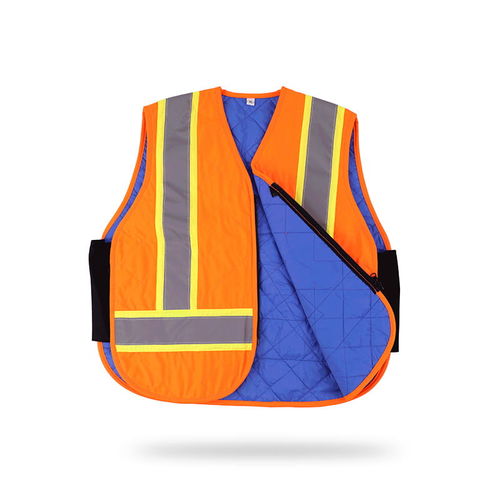As global temperatures continue to rise, staying comfortable and productive in scorching heat has become a major concern for many. From outdoor workers and athletes to those in un-air-conditioned indoor environments, the challenge of battling heatwaves is ever-present. This is where the cooling vest, an innovative personal cooling solution, is beginning to gain mainstream attention.
How Cooling Vests Work: Principles and Mechanisms
The core principle of a cooling jacket is to draw heat away from the body, thereby lowering core temperature and providing a refreshing sensation. The most common types of cooling vests on the market include:
-
Phase Change Material (PCM) Cooling Vests: These cooling jackets use special materials that absorb heat as they transition from a solid to a liquid state. When the vest is worn, the material absorbs body heat and melts, providing a prolonged cooling effect. They typically need to be "recharged" by being placed in a refrigerator or freezer before use.
-
Evaporative Cooling Vests: The working principle of this cool vest is similar to how the human body sweats. The vest is filled with special water-absorbent materials. When soaked, the water evaporates, carrying heat away with it. Since evaporation requires energy absorption, this method effectively lowers the wearer's body temperature. These vests are usually lightweight and easy to use, but their cooling efficiency can be affected by environmental humidity.
-
Fan-Assisted Cooling Vests: These vests have small integrated fans that circulate air between the body and the vest. This airflow accelerates the evaporation of sweat, providing a cooling effect. This type of cooling vest is particularly effective in dry, well-ventilated environments.
-
Ice/Gel Pack Cooling Vests: This is the most direct cooling method, using reusable ice or gel packs placed inside the vest to absorb heat through direct contact. The advantage of this method is the rapid cooling effect, but the duration is relatively short, and the melting packs may leave behind condensation.
Who Can Benefit from a Cooling Vest?
The applications for a cooling vest are extensive, and its professional functionality makes it an ideal choice for specific groups of people:
-
Industrial and Construction Workers: Working in high-temperature environments poses a high risk of heat stroke. Wearing a cooling jacket can effectively lower core body temperature, improving work safety and efficiency.
-
Athletes: Especially marathon runners and football players, whose body temperatures can rise dramatically during prolonged, high-intensity exercise. A cool vest helps them maintain peak performance during training and competition and can prevent heat stress.
-
Medical and Emergency Personnel: During summer emergency rescue missions or long hours of outdoor duty, a cooling vest can provide necessary body cooling, ensuring they can complete their tasks effectively.
-
Gardeners and Outdoor Enthusiasts: For anyone who spends long hours outdoors under the sun, a cooling vest allows them to enjoy their activities without suffering from the heat.

Choosing and Using a Cooling Vest
When selecting a cooling jacket, you should consider your personal needs and the environment in which you'll be using it. First, consider the cooling method—different principles have their own pros and cons. Secondly, fit is crucial; a vest that is too loose or too tight will affect its cooling efficiency. Professional cooling vests are often designed with adjustable straps to ensure a snug fit against the body. Finally, weight and maintenance are also important factors to consider.
In conclusion, a cooling vest is more than just a simple product for staying cool; it represents how technology can empower personal health and safety. With continuous advancements in material science and wearable technology, future cooling vests will be even lighter, more efficient, and smarter, providing us with a powerful tool to face the climate challenges ahead.

 English
English 简体中文
简体中文







 3rd Floor, East Gate, No. 2599 Park Road, Sheng Ze Town, Wu Jiang District, Suzhou City, Jiangsu Province
3rd Floor, East Gate, No. 2599 Park Road, Sheng Ze Town, Wu Jiang District, Suzhou City, Jiangsu Province  +86- 0512-63519080
+86- 0512-63519080
 +86-13584404311
+86-13584404311  FQsales1@163.com
FQsales1@163.com